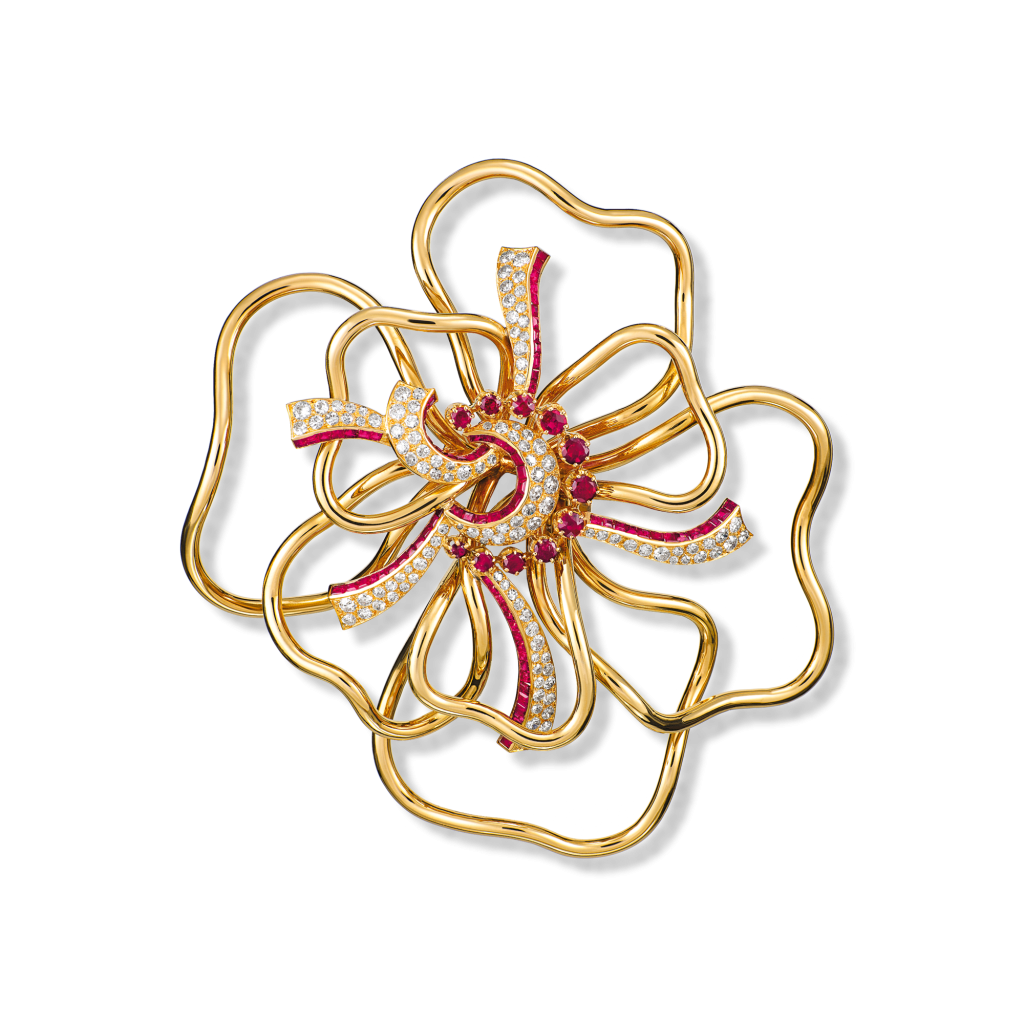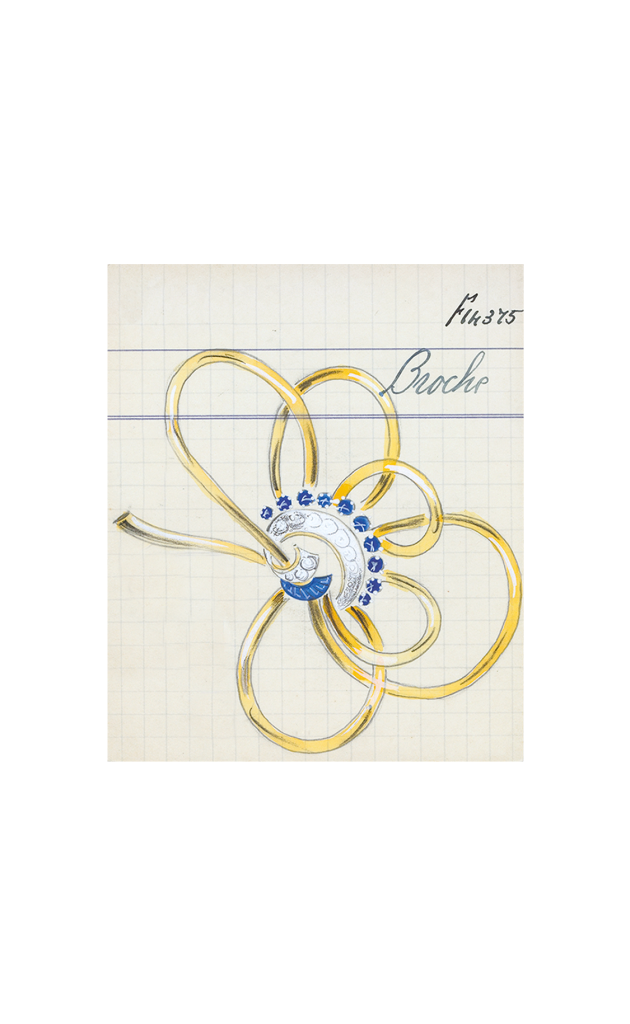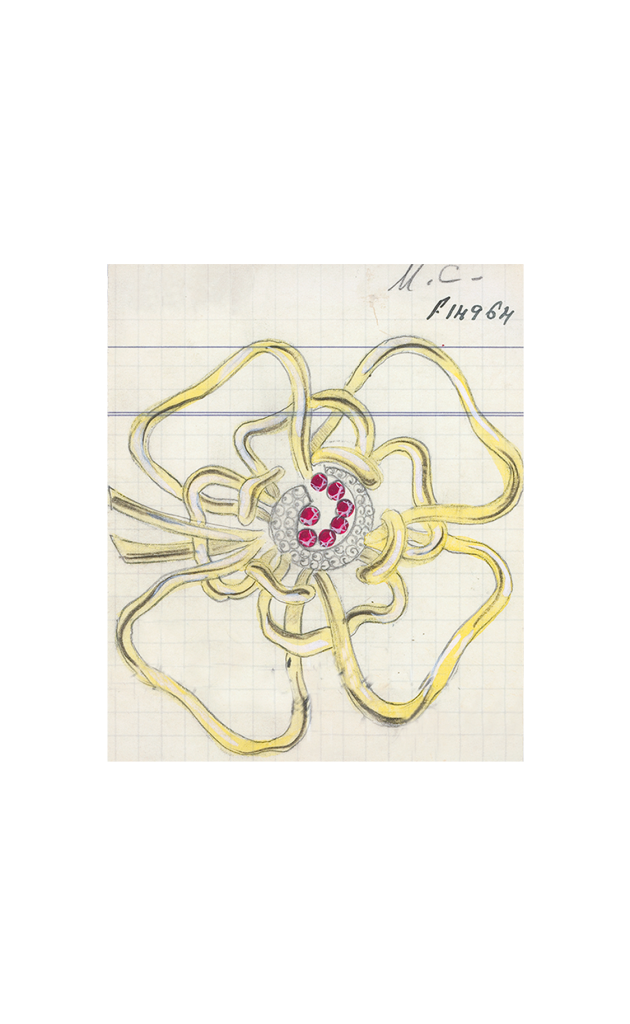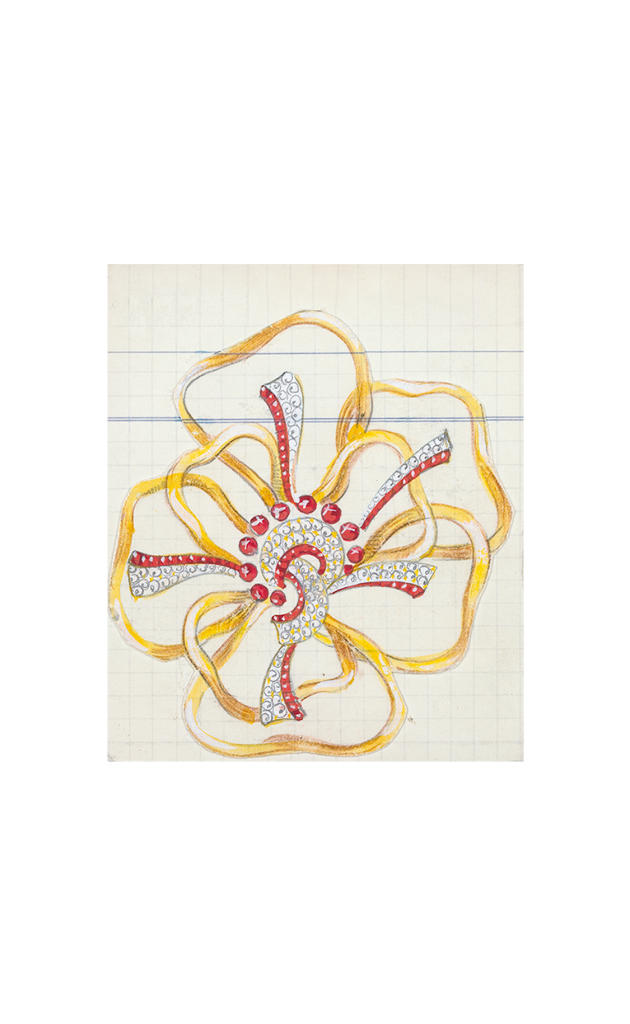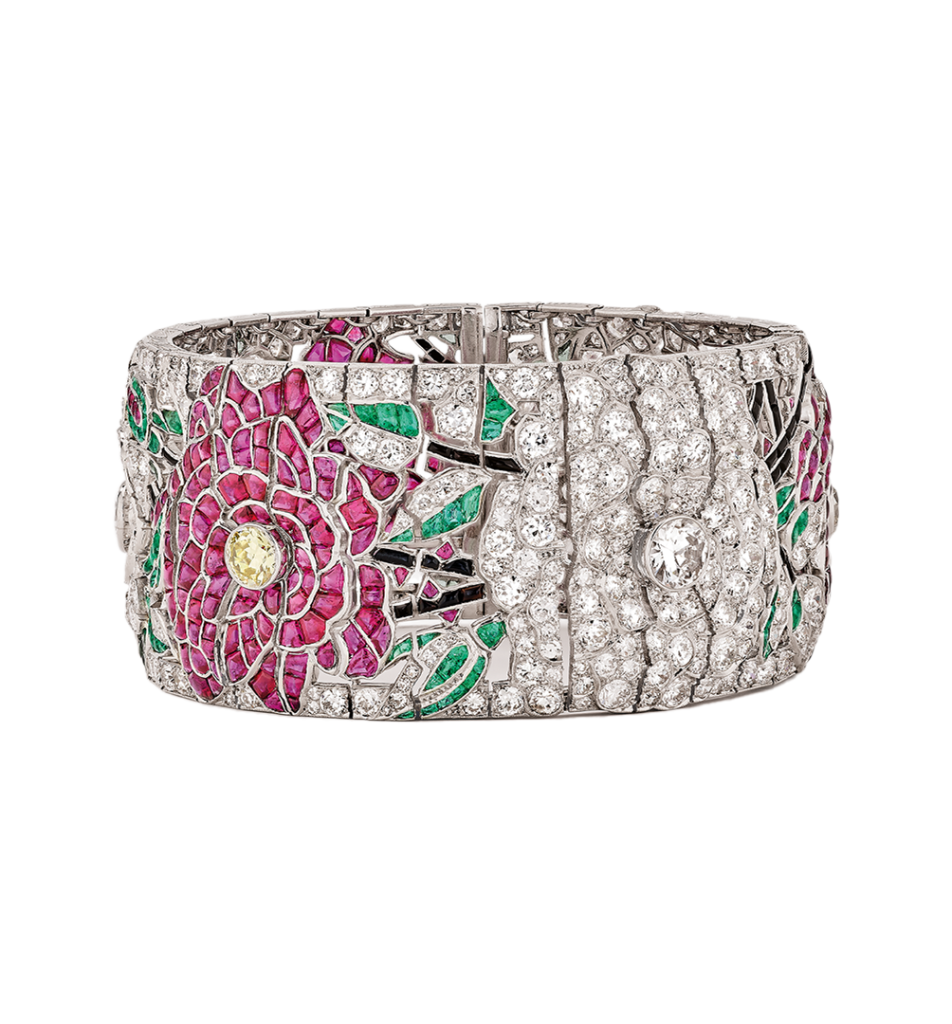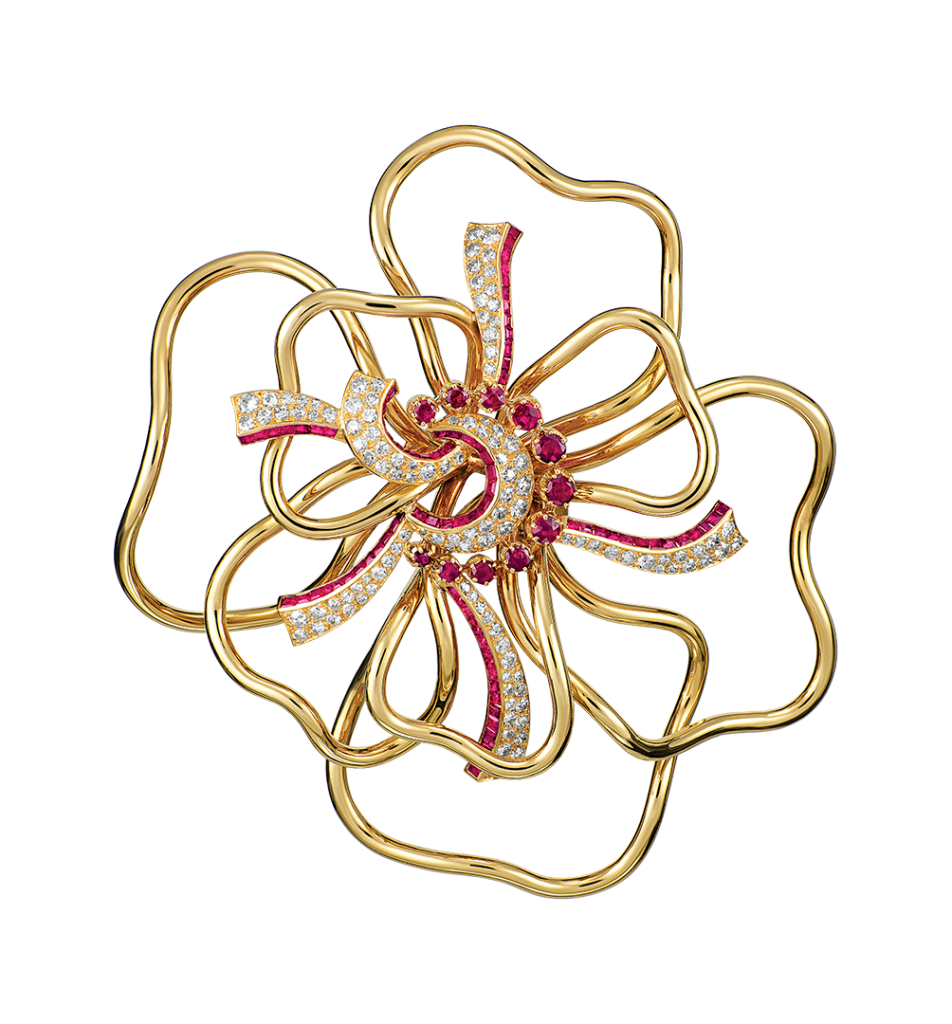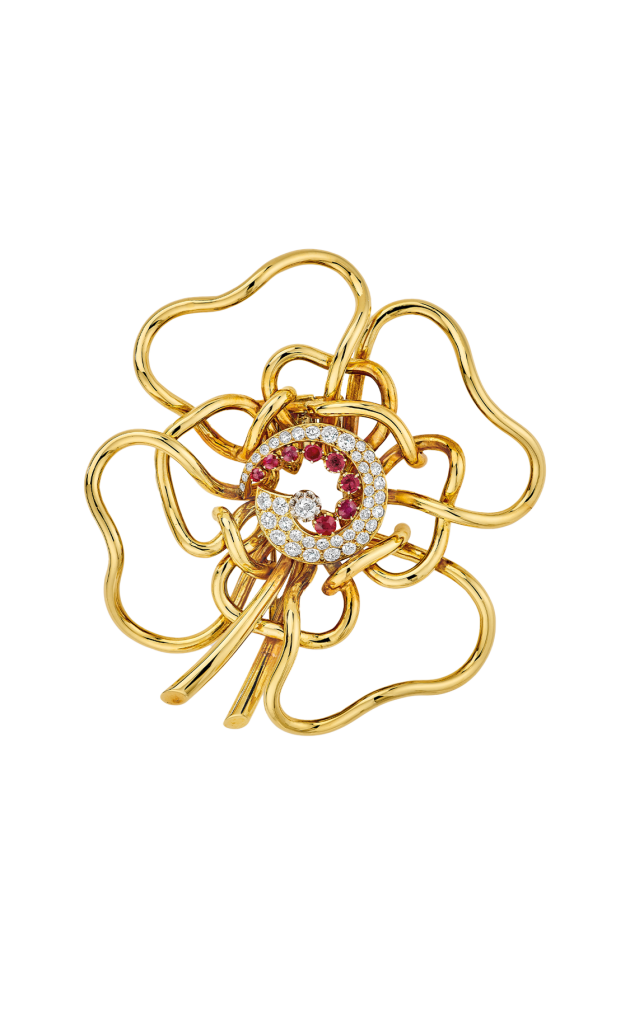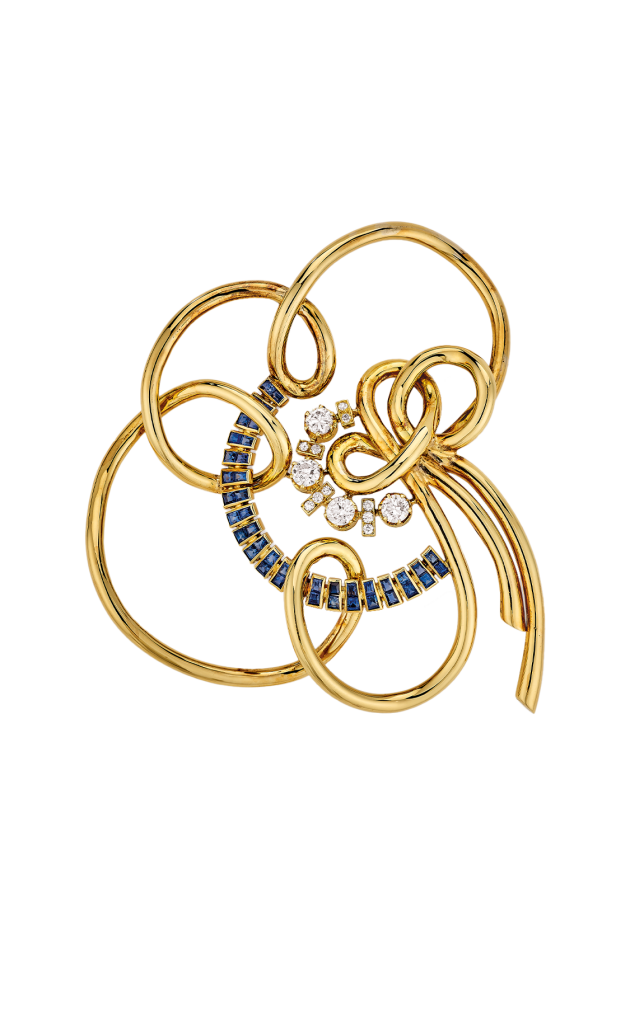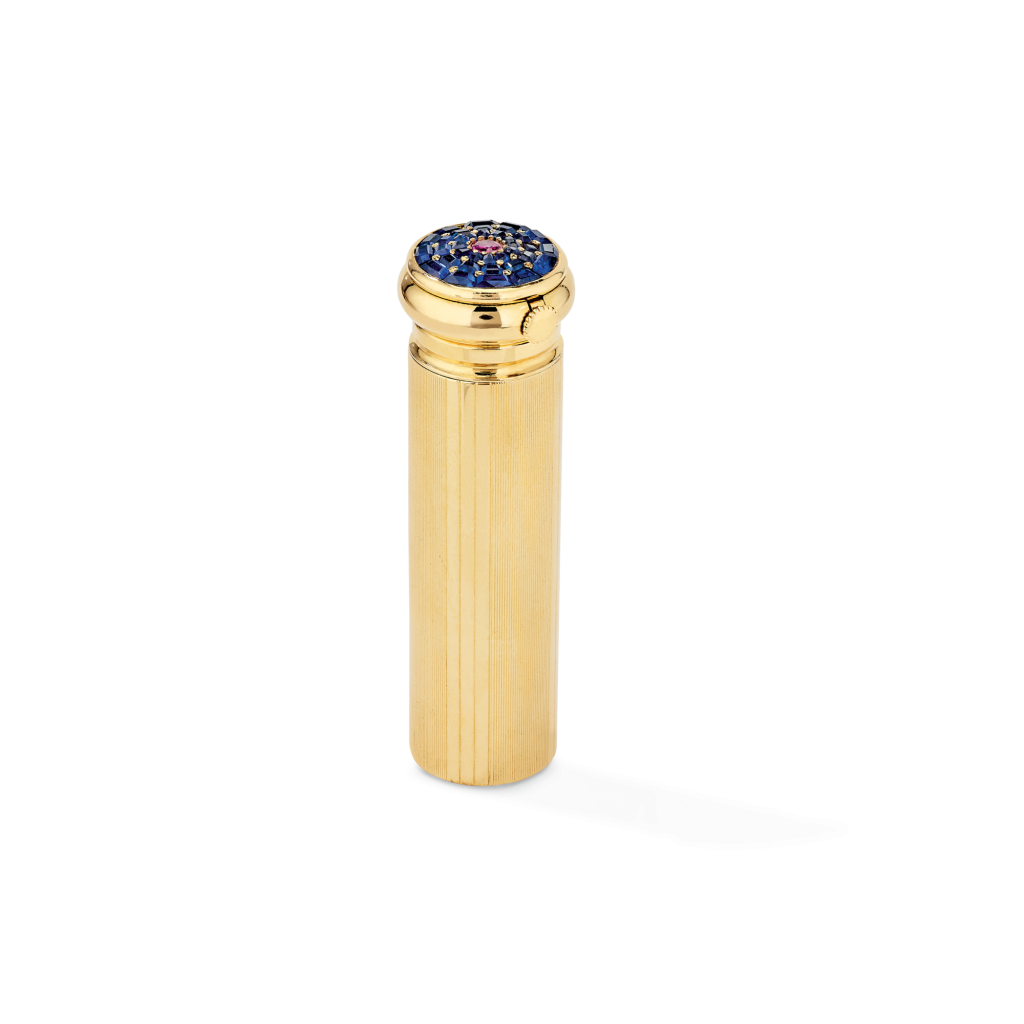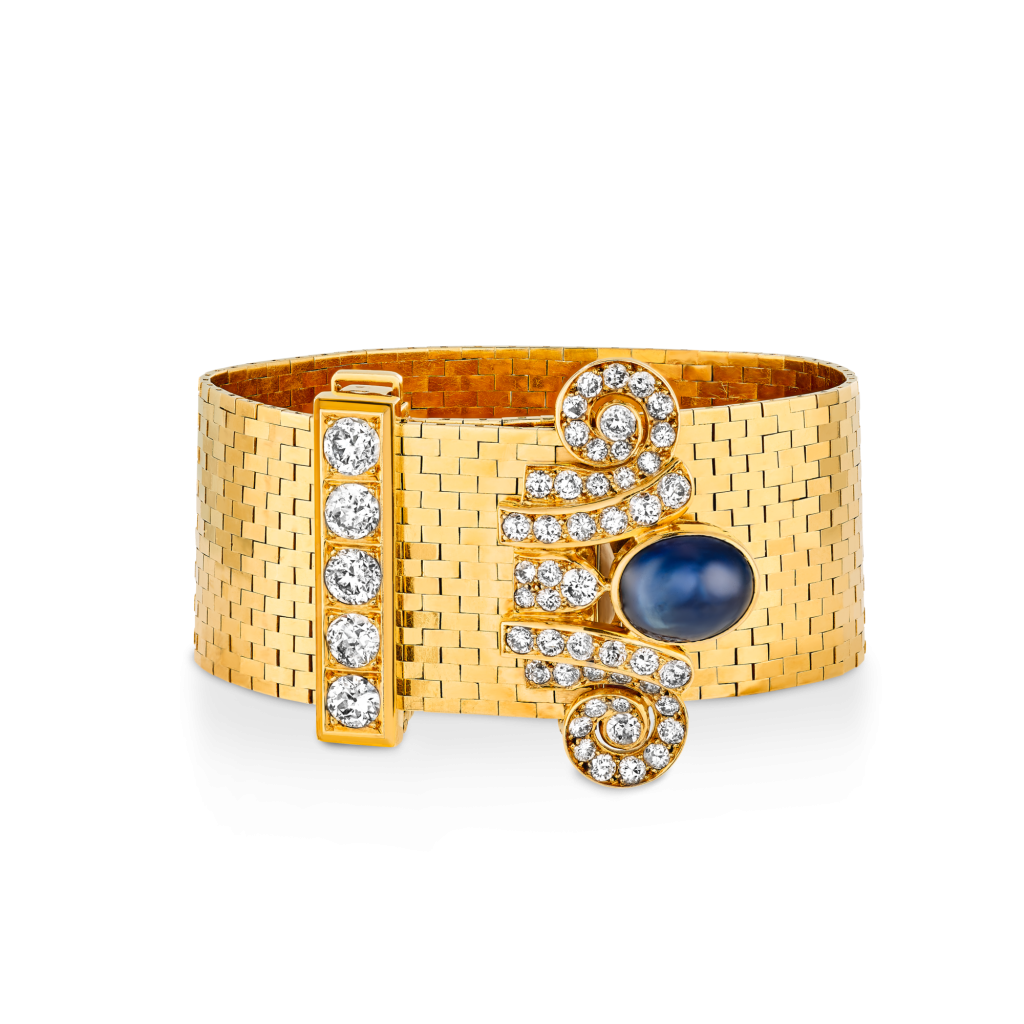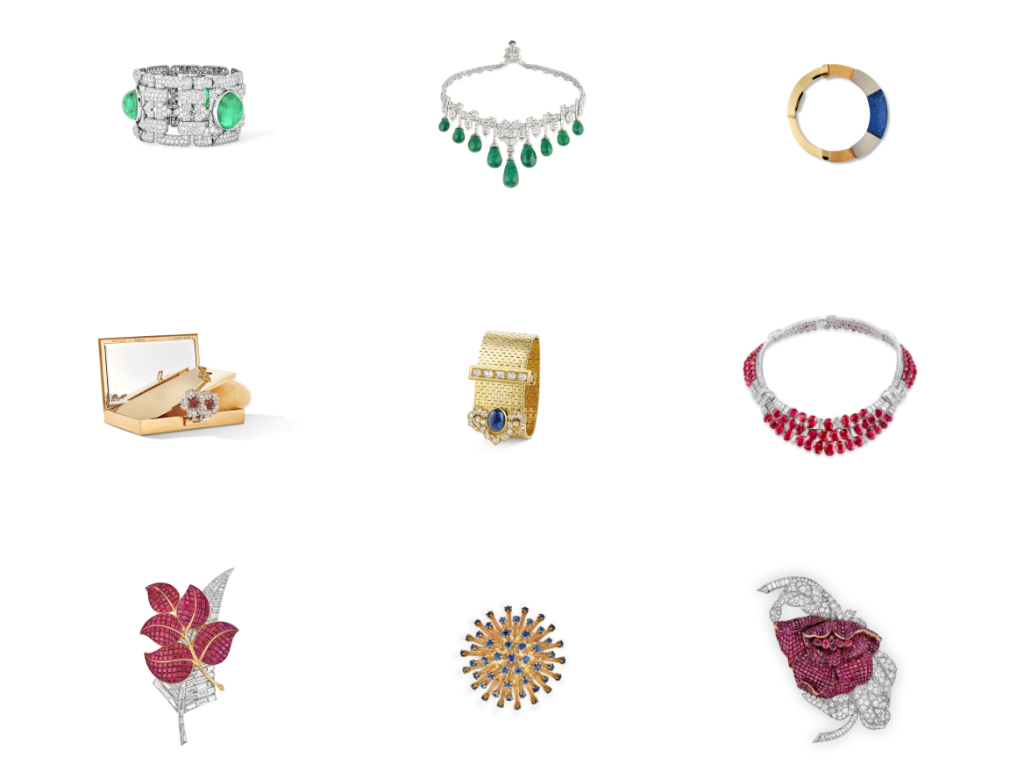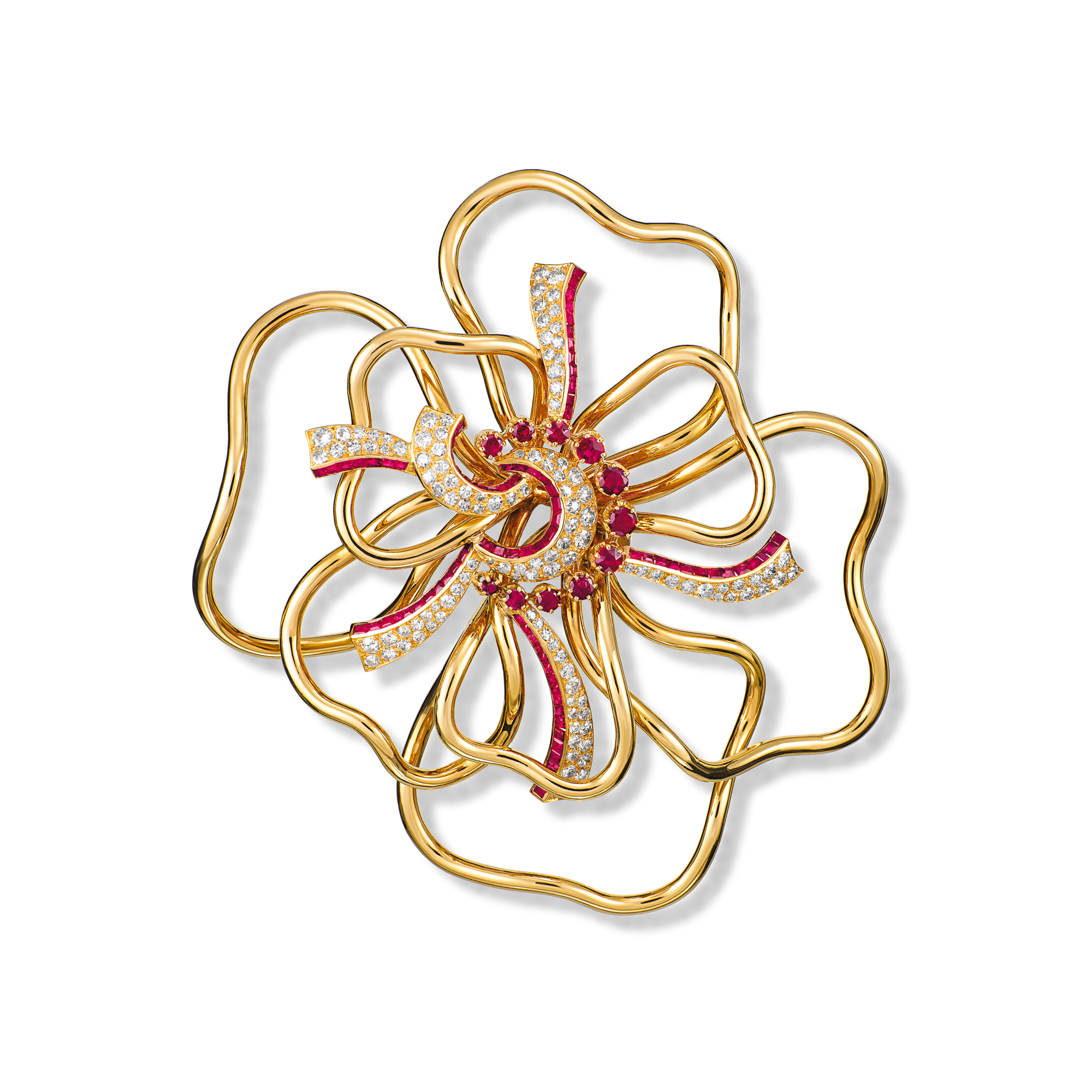
Fleur Silhouette clip
Creation details
- Creation year 1937
- Usage Clip
- Dimensions 110 × 100 mm
Created in the late 1930s, the Fleur Silhouette clips afford an example of the stylization of form that typified the late Art Deco period.
This model, dating from 1937, displays an eight-lobed motif in polished yellow gold thread that suggests overlapping petals arranged around the heart of a flower. As seen in a number of archive documents bearing the words “flower silhouette,” the corolla is only outlined with gold thread, thus breaking with traditional floral representations. In the center of this clip, a yellow gold ribbon pave-set with brilliants and reinforced with a row of calibrated rubies forms a loop edged with claw-set round rubies from which six other ribbons escape. Other models of the Fleur Silhouette clips recall different varieties of flowers without referring to any particular species. The different versions vary according to the number of petals, their random form and the pattern of the ribbons, decorated with diamonds accompanied by rubies or sapphires.
Hybridizing floral motifs with textile ornaments
While the introduction of ornamentation drawn from clothing was not unprecedented in the Maison’s history, the analogy between ribbon and floral motif was. The use of motifs borrowed from the world of textiles grew within the jewelry arts in the late 1930s, reinforcing the revival of links between the arts of fashion and jewelry.
PRODUCT CARDS OF FLEUR SILHOUETTE CLIPS
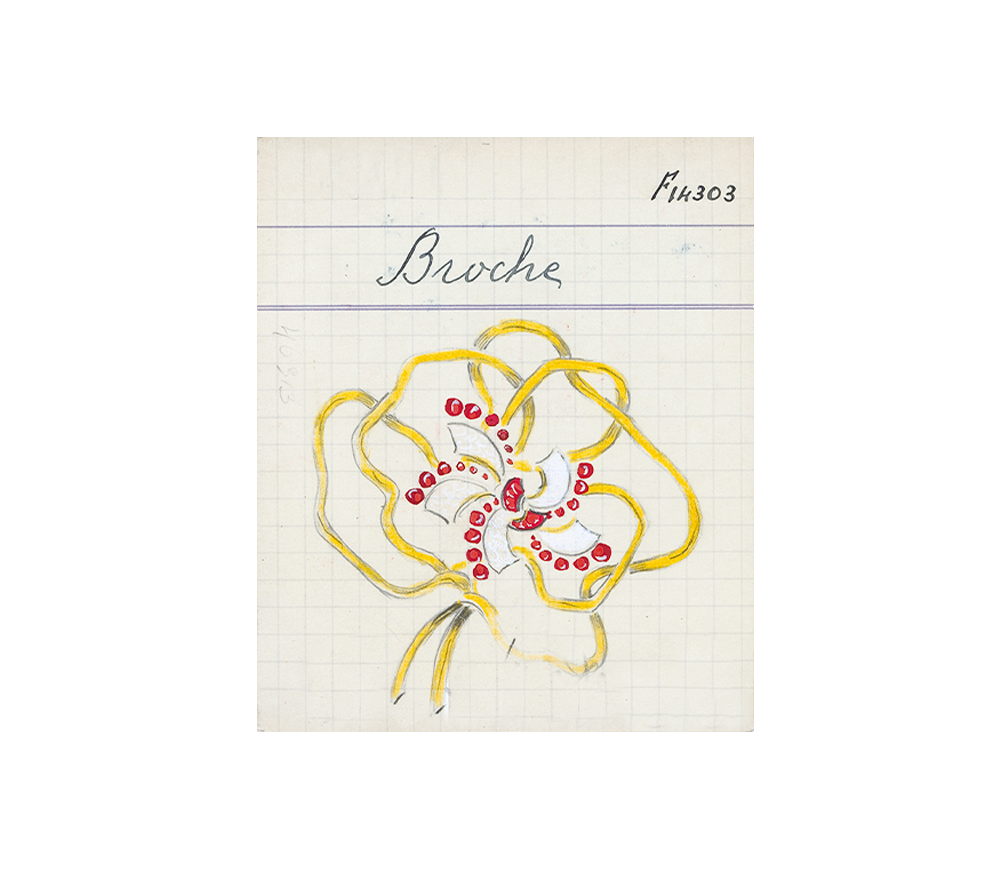
The stylization of floral motifs
Even though, in the 1920s, floral represen- tations displayed a degree of geometric stylization, a concern for naturalistic detail nonetheless persisted, as seen in the Fleurs enlacées, roses rouges et blanches bracelet from 1924 with its overlapping petals of pave-set buff-top rubies.
Fleurs enlacées, roses rouges et blanches bracelet
The story of the bracelet Fleurs enlacées, roses rouges et blanchesBy 1937, however, unconcerned by realism, the Fleur Silhouette clip only sketched the contours of a flower, reducing it to its formal essence by the use of yellow gold threads. With its pared-down design, it provided a reinterpretation of the floral motif as well as adopting the Modernist precepts of abstraction in a model full of lightness and movement.
To go deeper
